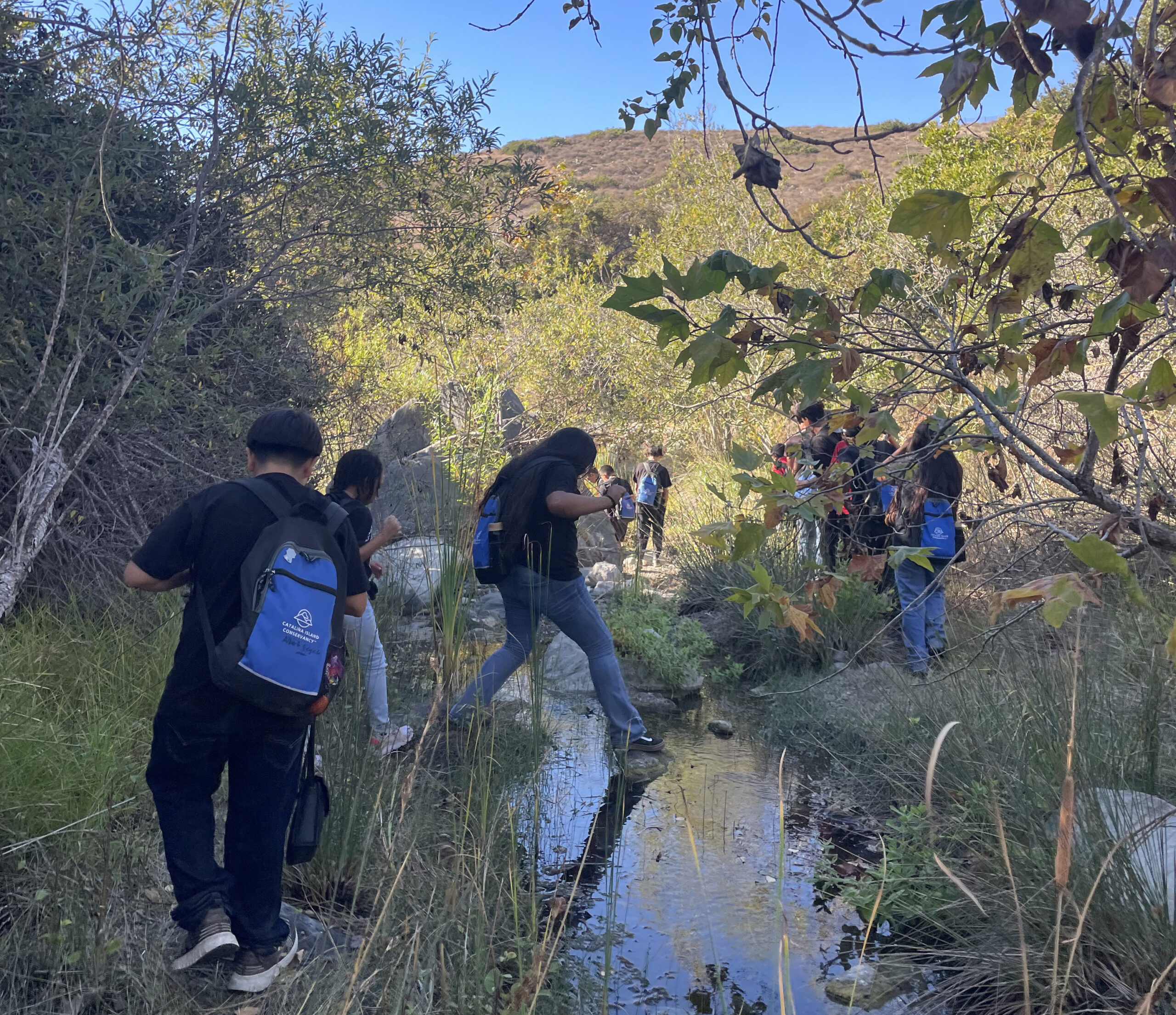Course Catalina: Inspiring Generations of Environmental Advocates
EducationCourse Catalina, a hands-on educational program by the Catalina Island Conservancy, provides 200 Long Beach middle school students with immersive field trips eight times a year, fostering environmental awareness through interactive lessons on Catalina’s biodiversity, conservation efforts, and island ecology, with longtime supporter Nick Boone playing a key role in its success.

Students explore Catalina Island.
Key to Catalina Island Conservancy’s commitment to creating Los Angeles County’s largest outdoor classroom, Course Catalina immerses students in field-based exploration. Eight times a year, 200 Long Beach middle school students join the Conservancy for daylong field trips into the island’s interior, where they get close to the island’s unique biodiversity.
The course starts with a trip to the island’s airport, Airport in the Sky. Students learn about Catalina’s beloved endemic foxes and the importance of protecting the fox population through the Conservancy’s monitoring projects. Students learn about the special mechanisms that bring plants to the island—whether by “wing, wind or wave”—and how animals can evolve in unique ways due to island isolation. For example, predators such as foxes may become smaller over time, while prey animals may grow larger—a phenomenon known as dwarfism and gigantism.

Students at the Airport in the Sky study a geographical map of Catalina Island.
“Course Catalina has been deeply impactful over the years for many young minds and has helped encourage students to become nature champions,” shared Jolie Colby, director of education at Catalina Island Conservancy. “It has the longevity we like to see in conservancy education programs. Deeply involved and invested donors like Nick Boone are a big part of why this program has been a meaningful success.”
Colby said Boone, who has supported Course Catalina for over 25 years, has been instrumental in shaping the program. As someone who attends every field trip with the students, he sees firsthand how powerful the course is in educating students and inspiring them to cultivate a lifelong respect for nature.
“It’s great to see how quickly the program fills up with interested students, and I love being able to talk with the students on our way to Catalina on the ferry,” shared Nick. “A number of them haven’t been on a boat or to the island, so it’s a new world for many. They seem to love seeing the whales in the ocean on their way to their destination. By the end of the trip, they’re all very excited. I receive thoughtful thank you letters from the kids. I think the exposure to nature these kids get through Course Catalina opens doors to more of them being interested in science.”
Course Catalina has inspired many students to commit to environmental advocacy. Some pursue further studies in environmental science, while others get involved in local conservation projects or sustainable initiatives in their communities. Boone’s dedication to nurturing this spirit of stewardship is evident in the enthusiasm and engagement he brings to each program, showing students they have the power to effect change.
Field trips conclude at Little Harbor, where students experience the island’s windward side and its ecology. The day ends with dinner at Topside restaurant in Avalon, where they share key takeaways and reflections.
Colby said that during November’s session, student participants expressed how much they enjoyed hiking and that being outdoors gave them a sense of peace.
“Course Catalina is an inspiration,” said Colby. “The Conservancy’s education team plans to nurture the reach and impact of Course Catalina, offering more Southern Californian students the chance to learn and explore in L.A.’s largest outdoor classroom–Catalina Island.”


